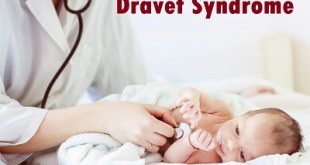Overview
Amyotrophic lateral sclerosis (ALS), also known as Lou Gehrig’s disease, is a progressive degeneration of nerve cells that control muscle movements. The disease, the most common motor neuron disease among adults, became known as Lou Gehrig’s disease after the New York Yankee’s Hall of Fame first baseman. Gehrig’s career ended in 1939 because of the condition. About 30,000 patients in this country have the disease and about 5,000 are diagnosed with ALS every year.
ALS tends to strike in mid-life between the ages of 40 and 60, but others can develop the disease. Men are about one-and-a-half times more likely to have the disease than women. In most cases, it occurs at random with no family history of the disease. ALS attacks nerve cells and pathways in the brain and spinal cord, causing the body’s motor neurons to waste away. The result is progressive muscle weakness and in coordination, causing difficulty with mobility, speaking, swallowing and breathing. Proper medication and physical therapy, however, can help control symptoms and allow patients to lead more independent lives.
Types of Amyotrophic lateral sclerosis
There are two types of ALS, sporadic and familial. Both have the same signs, symptoms, and prognosis, with the primary difference being the underlying cause.
Sporadic ALS: Sporadic ALS accounts for 90% to 95% of all cases. Four main causes have been hypothesized to cause sporadic ALS: oxidative damage, apoptosis (programmed cell death), glutamate-mediated excitotoxicity, and protein aggregation. Other possible causes include chronic inflammation and autoimmune processes. While the cause of sporadic ALS is still unknown, it may not be due to any single factor.7
Familial ALS: The remaining 5% to 10% of ALS cases are familial, where genetics plays an important role. Of these, 20% are caused by a mutation on the gene encoding superoxide dismutase 1 (SOD1). The remaining 80% are caused by unknown genetic mutations.
Amyotrophic lateral sclerosis risk factors
Some of the potential risk factors associated with Amyotrophic Lateral Sclerosis include:
Heredity – Five to 10 percent of the people with ALS inherit it (familial ALS). In most people with familial ALS, their children have a 50-50 probability of developing the disease.
Age – ALS can strike at any age, however the risk increases with age, and is most common in individuals between the ages of 40 and 60. Symptoms usually develop between the age of 55 and 75.
Gender – Before the age of 65, men are slightly more likely than women to develop ALS. Beyond that age, the difference between men and women disappears.
Genetics – Some studies examining the entire human genome (genomewide association studies) found many similarities in the genetic variations of people with familial ALS and some people with non-inherited ALS. These genetic variations might make people more susceptible to ALS.
Smoking – Smoking increases the risk of ALS, especially in postmenopausal women.
Environmental toxins – Exposure to specific chemical or metals like lead increases the risk of developing ALS.
Classification of Amyotrophic lateral sclerosis
Because no specific qualities can be predicted of all people diagnosed with ALS, the cause is unknown. The following classification is used by physicians:
Classical ALS: A progressive neurological disease characterized by a deterioration of upper and lower motor nerve cells (neurons). This type of ALS affects over two-thirds of all people with ALS.
Primary Lateral Sclerosis: A progressive neurological disease in which the upper motor nerve cells (neurons) deteriorate. If the lower motor neurons are not affected within two years, the disease usually remains a pure upper motor neuron disease. This is the rarest of all forms of ALS.
Progressive Bulbar Palsy (PBP): A condition that starts with difficulties speaking, chewing and swallowing due to lower motor nerve cell (neuron) deterioration. This disorder affects about 25% of all people with ALS.
Progressive Muscular Atrophy (PMA): A progressive neurological disease in which the lower motor neurons deteriorate. If the upper motor neurons are not affected within two years, the disease usually remains a pure lower motor neuron disease.
Amyotrophic lateral sclerosis causes
Researchers still don’t know exactly what causes motor neurons to die with ALS. Gene changes, or mutations, are behind 5% to 10% of ALS cases. More than 12 different gene changes have been linked to ALS. One change is to a gene that makes a protein called SOD1. This protein may be toxic to motor neurons. Other gene changes in ALS might also damage motor neurons.
Environment could also play a role in ALS. Scientists are studying whether people who come into contact with certain chemicals or germs are more likely to get the disease. For example, people who served in the military during the 1991 Gulf War have gotten ALS at higher rates than usual.
Scientists are also looking at these other possible causes:
Glutamate: This chemical sends signals to and from the brain and nerves. It’s a type of neurotransmitter. With ALS, glutamate builds up in the spaces around nerve cells and may damage them. The medications riluzole (Rilutek) works by lowering glutamate levels and can help slow the development of the disease.
Immune system problems: Your immune system protects your body from foreign invaders such as bacteria and viruses. In your brain, microglia is the main type of immune cell. They destroy germs and damaged cells. With ALS, microglia might also destroy healthy motor neurons.
Mitochondria problems: Mitochondria are the parts of your cells where energy is made. A problem with them might lead to ALS or make an existing case worse.
Oxidative stress: Your cells use oxygen to make energy. Some of the oxygen your body uses to make energy may form into toxic substances called free radicals, which can damage cells. The medication edaravone (Radicava) is an antioxidant that can help control these free radicals.
Symptoms of Amyotrophic lateral sclerosis
Patients who suffer from ALS initially experience weakness in one of their limbs that develops over a matter of days or, more commonly, a few weeks. Then, several weeks to months later, weakness develops in another limb. Sometimes the initial problem can be one of slurred speech or difficulty swallowing. As ALS progresses, though, more and more symptoms are noticed. The following are the most common symptoms of ALS. However, each individual may experience symptoms differently.
Symptoms may include:
- Twitching and cramping of muscles, especially those in the hands and feet
- Loss of motor control in the hands and arms
- Impairment in the use of the arms and legs
- Tripping and falling
- Dropping things
- Persistent fatigue
- Uncontrollable periods of laughing or crying
- Slurred or thick speech and difficulty in projecting the voice
As the disease progresses, symptoms may include:
- Difficulty breathing
- Difficulty swallowing
- Paralysis
The symptoms of ALS may resemble other conditions or medical problems. Always consult your doctor for a diagnosis.
Symptoms of ALS
Complications
Early diagnosis of amyotrophic lateral sclerosis (ALS) is important for reducing the severity of complications and slowing the progression of the disease. Complications of ALS are serious and life threatening. You can help minimize your risk of some complications and slow disease progression by following the treatment plan you and your health care professional design specifically for you. Complications of ALS include:
- Bed sores
- Inability to perform daily tasks
- Paralysis
- Pneumonia, respiratory failure, or collapsed lung
- Pulmonary aspiration (inhaling substances into lungs)
- Respiratory arrest
- Weight loss
- Withdrawal or depression
Diagnosis and test
There is no specific test to diagnose ALS. Your healthcare provider will consider your medical history and symptoms. He or she will also do certain tests to rule out other conditions, such as:
- Lab tests: These include blood and urine studies.
- Electrodiagnostic tests, such as electromyography (EMG) and nerve conduction study (NCS). These studies evaluate and diagnose disorders of the muscles and motor neurons. Your healthcare provider inserts electrodes into the muscle or places them on the skin overlying a muscle or muscle group to record electrical activity and muscle responses.
- MRI: This procedure uses large magnets, radio waves, and a computer to make detailed images of organs and structures within the body.
In some cases, other tests may be needed due to atypical features of ALS, such as:
- Muscle or nerve biopsy: In this procedure, your healthcare provider removes a sample of tissue or cells from the body and examines it under a microscope.
- Spinal tap (lumbar puncture): In this test, your healthcare provider places a special needle into the lower back, into the area around the spinal cord. There he or she can measure the pressure in the spinal canal and brain. Your healthcare provider will remove a small amount of cerebrospinal fluid (CSF) and test it for an infection or other problems. CSF is the fluid that bathes the brain and spinal cord.
- X-ray: This test uses invisible electromagnetic energy beams to make images of internal tissues, bones, and organs onto film.
Treatment and medications
The damage caused by ALS cannot be reversed. Treatment is given to slow down the progression of the disease, prevent complications so that the individual live an independent life. The treatments of ALS include:
Medications
The Food and Drug Administration has approved two drugs for treating ALS:
Riluzole (Rilutek): Taken orally, this drug has been shown to increase life expectancy by three to six months. It can cause side effects such as dizziness, gastrointestinal conditions and liver function changes. Your doctor will monitor your blood counts and liver functions while you’re on the drug.
Edaravone (Radicava): This drug, given by intravenous infusion, has been shown to reduce the decline in daily functioning. Its effect on life span isn’t yet known. Side effects can include bruising, headache and shortness of breath. This medication is given daily for two weeks a month.
Your doctor might also prescribe medications to provide relief from other symptoms, including:
- Muscle cramps and spasms
- Constipation
- Fatigue
- Excessive saliva and phlegm
- Pain
- Depression
- Sleep problems
- Uncontrolled outbursts of laughing or crying
Therapies
Breathing care: You’ll eventually have more difficulty breathing as your muscles weaken. Doctors might test your breathing regularly and provide you with devices to assist your breathing at night. You can choose mechanical ventilation to help you breathe. Doctors insert a tube in a surgically created hole at the front of your neck leading to your windpipe (tracheostomy that connects to a respirator.
Physical therapy: A physical therapist can address pain, walking, mobility; bracing and equipment needs that help you stay independent. Practicing low-impact exercises can help maintain your cardiovascular fitness, muscle strength and range of motion for as long as possible.
Regular exercise can also help improve your sense of well-being. Appropriate stretching can help prevent pain and help your muscles function at their best. A physical therapist can also help you adjust to a brace, walker or wheelchair and might suggest devices such as ramps that make it easier for you to get around.
Occupational therapy: An occupational therapist can help you find ways to remain independent despite hand and arm weakness. Adaptive equipment can help you perform activities such as dressing, grooming, eating and bathing. An occupational therapist can also help you modify your home to allow accessibility if you have trouble walking safely.
Speech therapy: A speech therapist can teach you adaptive techniques to make your speech more understandable. Speech therapists can also help you explore other methods of communication, such as an alphabet board or pen and paper. Ask your therapist about the possibility of borrowing or renting devices such as tablet computers with text-to-speech applications or computer-based equipment with synthesized speech that can help you communicate.
Nutritional support: Your team will work with you and your family members to ensure you’re eating foods that are easier to swallow and meet your nutritional needs. You might eventually need a feeding tube.
Psychological and social support: Your team might include a social worker to help with financial issues, insurance, and getting equipment and paying for devices you need. Psychologists, social workers and others may provide emotional support for you and your family.
Prevention
There is no definite method to prevent ALS.
- However, people with ALS can participate in clinical trials, the National ALS Registry, and the National ALS Biorepository. This participation may help researchers learn about potential causes and risk factors of the disease.
- Multidisciplinary ALS clinics provide specialty care to people living with the disease. Attending multidisciplinary ALS clinics may improve the quality and length of life of people living with ALS.
 Diseases Treatments Dictionary This is complete solution to read all diseases treatments Which covers Prevention, Causes, Symptoms, Medical Terms, Drugs, Prescription, Natural Remedies with cures and Treatments. Most of the common diseases were listed in names, split with categories.
Diseases Treatments Dictionary This is complete solution to read all diseases treatments Which covers Prevention, Causes, Symptoms, Medical Terms, Drugs, Prescription, Natural Remedies with cures and Treatments. Most of the common diseases were listed in names, split with categories.







